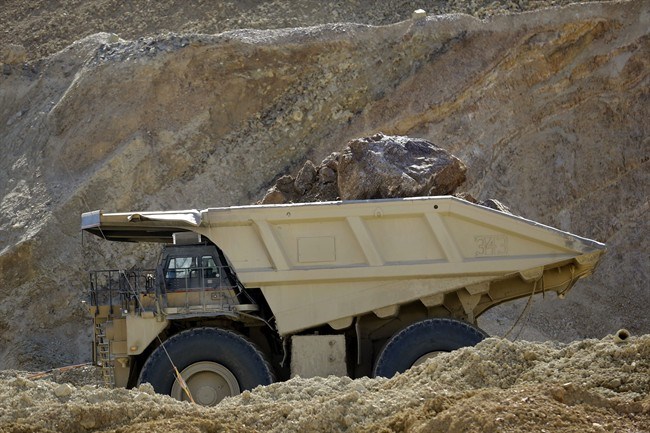SALT LAKE CITY - The landslide that washed over the terraced steps of a mining pit nearly a mile deep left only the tip of one giant electric-powered shovel poking out of the dirt. The rubble buried three of them, along with 14 enormous haul trucks.
Even more of Kennecott Utah Copper's equipment lay buried under uneven piles of rubble as high as 300 feet at the bottom of the pit west of Salt Lake City.
It will take months for the major U.S. copper mine to recover from the devastating landslide, even though it had been anticipated by the company. It ran farther out than expected, burying equipment that had been staged there for a dig-out.
Yet company officials tried to sound optimistic Thursday as they opened Bingham Canyon mine to view for the first time since the April 10 slide.
"There's no doubt in my mind that there's a future in mining here," Kennecott Utah Copper chief Kelly Sanders said. "We'll meet this challenge."
Sanders said the company might be able to resume limited ore digging within days, but a full recovery could take a year.
Kennecott, which will work from a stockpile, will run out of copper in months and has cut its production goal for 2013 by half. The company has asked 2,100 workers to take vacation or unpaid leave, but few are doing so yet.
Sanders spoke to reporters on the rim of the breathtaking pit, now barren of activity. It spans nearly three miles wide, ringed by snow-capped mountains.
Company officials say 165 million tons of waste rock and dirt slid down a wall of the pit. They have said they expected it for months and kept workers away that very day.
The slide progressed in three pulses over three hours down multiple paths instead of falling all at once, nearly filling the bottom of the pit, said Matt Lengerich, the mine's general manager. They were so powerful that earthquake monitors operated by the University of Utah registered the commotion at up to a magnitude of 2.4.
Experts say it could be a blow to Utah's economy in the short term, depending on how quickly Kennecott can recover. That wasn't clear Thursday. Sanders said it will take four months for the company to draw up a plan for full operation.
On Thursday, haul trucks took loads of waste rock, but not from the landslide debris. Instead, they continued to widen the mine, an operation shut down for only 48 hours after the slide. It will take Kennecott another five years of digging to finish the expansion before reaching new ore deposits, Lengerich said. The work is taking place on a side of the pit opposite the landslide.
The effects already are being felt at one of Kennecott Utah Copper's outside contractors. Cementation USA Inc. said it laid off more than 40 workers who were tunneling into the pit to assess ore quality. Two tunnels and drilling equipment were buried by the landslide.
Sanders said no decisions have been made about any layoffs at Kennecott, though he repeatedly emphasized that the company had to cut costs to adjust to lower production goals. Workers are being reassigned, and a copper smelter also was operating at reduced levels.
Kennecott has informed investors it will produce 140,000 fewer tons of copper in 2013. It had planned to move 260 million tons of rock from the pit, but faces a waste pile nearly as large.
Company officials were uncertain how much of a cleanup was necessary — they could leave some of it in place and work around it.
Kennecott officials say two crucial pieces of equipment — a rock crusher and conveyer belt — were left undamaged inside the pit, making a faster recovery possible. They said federal regulators had granted them access to the bottom of the pit only Thursday.
The landslide was a major setback, said economists at the University of Utah. Kennecott adds $1.2 billion a year to the Utah economy, employs 2,810 workers on salaries and wages of $270 million and supports 14,971 other jobs, according to the school's Bureau of Economic and Business Research.



